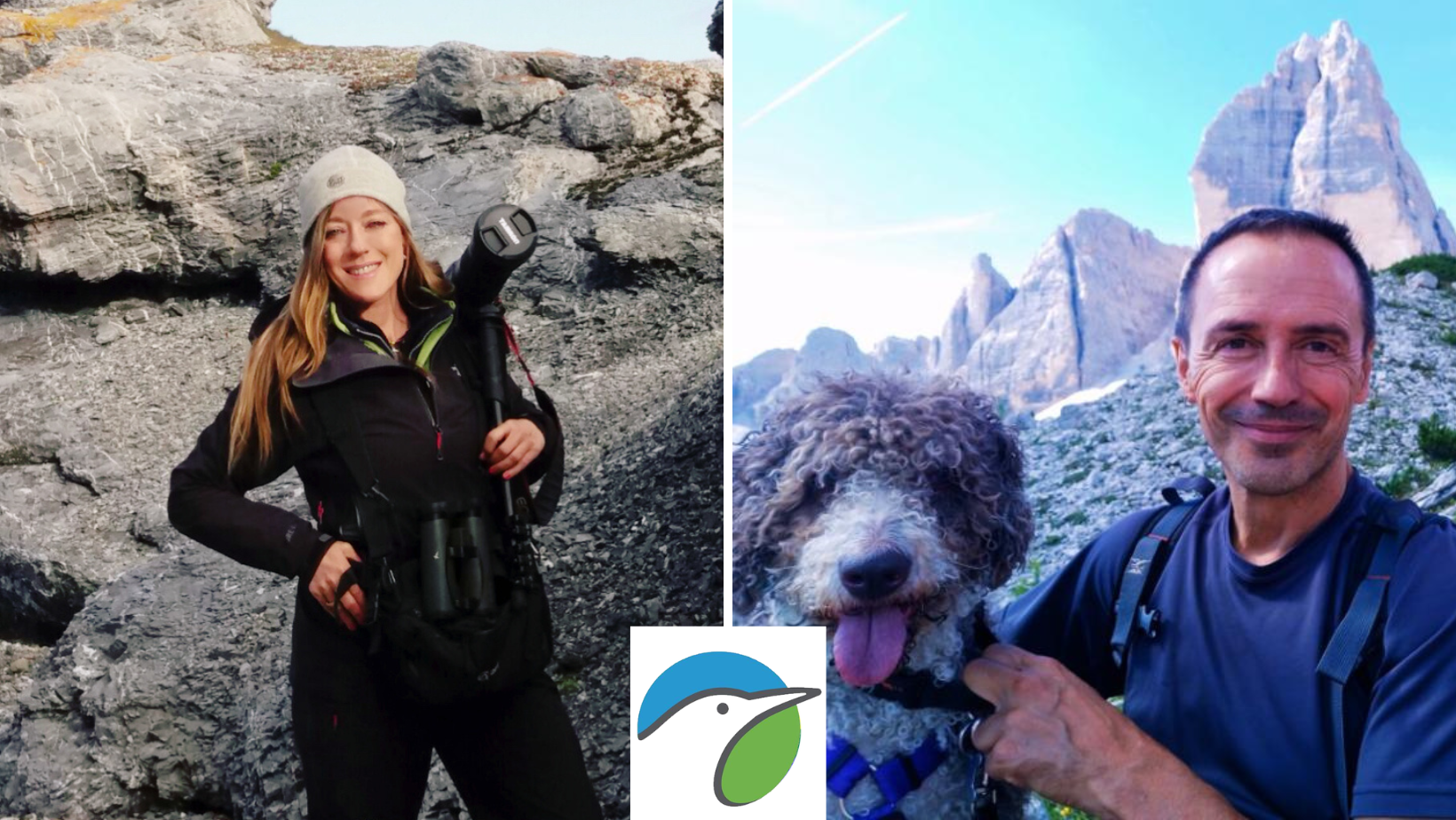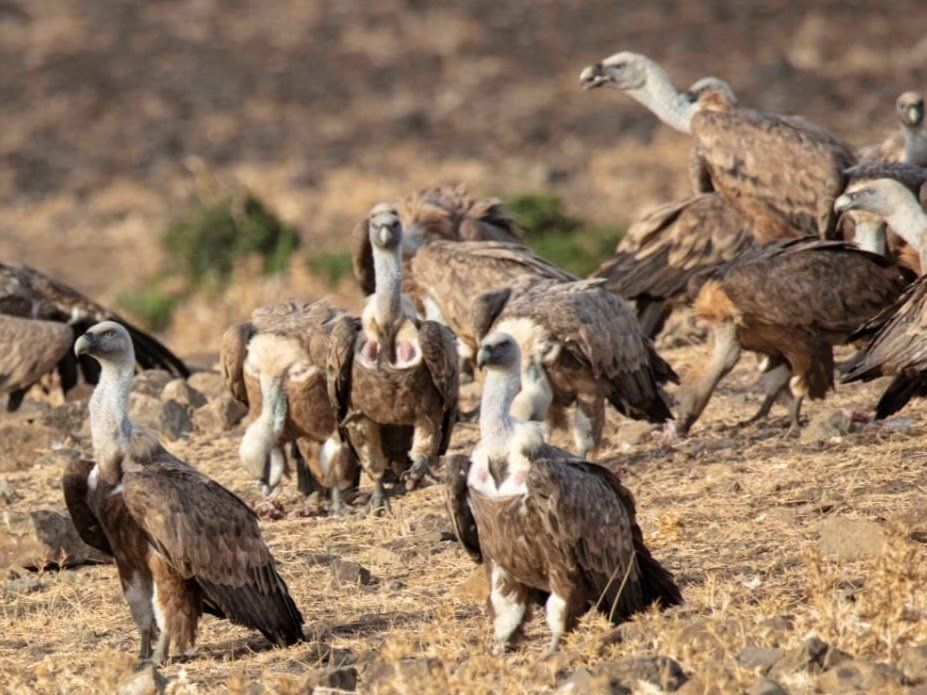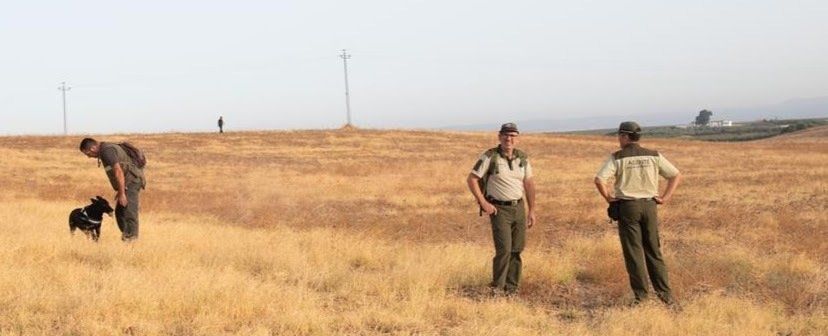Chemical Reaction: Migratory Birds Become Prey To Poisoned Baits
Ever since humans began holding livestock, we have been waging a war on predators, who were seen as a threat and competition to food resources. Then, with the advancement and availability of poisons, humans were able to persecute carnivores – including migrating birds – on an unprecedented level.
While many countries have outlawed the use of some poisons, the fight to stop poisoning is not over. It remains the most used method to kill predators, worldwide.
As the Flight of the Osprey expedition travelled into Europe, Conservation Without Borders’ founder Sacha Dench spoke with Jorge Fernández Orueta from the SEO Birdlife International Cooperation Program and Sara Cabezas Diaz, project Officer. Based in Spain, they explained that poison remains a major issue for migratory birds, particularly those using Spanish flyways that go across hunting grounds.

The illegal use of poison baits has a very serious impact on Spanish biodiversity and affects species such as the black vulture, the griffon vulture, the Egyptian vulture, the bearded vulture and the red kite. All these species, mostly threatened, along with other mammals, such as the brown bear, Iberian wolf, Iberian lynx or fox, are victims every year from the use of poisoned baits,” a report compiled by SEO/BirdLife and WWF Spain and MAVA Foundation said.
Migratory birds such as kites and vultures are often not the intended target of the poison but become victims by eating either the poison or an animal killed by poison.
Farmers with livestock will lay poison to kill stray dogs and wolves who may hunt their animals. When the dog or wolf dies, then the carrion attracts vultures and eagles. When the birds eat the poisoned dog, they too are killed, and a vicious cycle begins.
“The products they use are very persistent... In the past there was a poison that was extremely dangerous and killed everything. Any animal that ate the poison would die and then other scavengers would eat it. And then you would have a whole set of animals dead, which would attract more scavengers. At the beginning they were aiming to kill rats, but in the end you have dogs and eagles poisoned,” said Jorge.

Hero to Zero
Back in the 1950’s and prior to the ban on certain pesticides, “extermination” campaigns were highly organized, and governments actively encouraged people to kill “pests” for financial reward.
“There was a plan that if you gave the legs of a raptor to the administration, they would give you money for this. Or you bring the tail of a wolf they will pay you and they [hunters] used everything – traps, snares and poison,” said Jorge.
However, following a public shift in attitude, and a campaign to ban poison, governments then made it a criminal offence.
“In the 80s, in Spain, poison was still legal and even encouraged. And then overnight it was banned and the species that was vermin before, became protected,” said Jorge.
“It was something that was demanded by the people, they wanted to change this. So legislation changed. And the guy who was a hero for killing wolves, he became a villain,” he added.
While it is easy to put a law in place, it is harder to change people’s mindsets overnight. But Jorge is confident that attitudes are shifting, as more people are aware of the detrimental impact of poison.
Spain now has one of the highest persecution of poison use in the world, thanks to a cooperative between organisations, NGOS and the Administration
An autopsy of the recovered body is conducted and once an animal is determined to have been poisoned, they are then entered into a register.
In Spain, there have only been four confirmed cases of osprey being poisoned since 1992. But if you look at the overall number of poisoned migratory birds the number is shocking.
Since 1992 – 2017 there were more than 21,000 cases, of which 7,300 were raptors. But both Sara and Jorge stressed that is only what they have seen in recovery centers. The true number is more likely to be around 20,000 – 25,000 raptors, in Spain alone.
“This is an estimation – it is difficult because poison is laid very discretely and on private land which means people do not have access. Commonly the animal will go to a secret place and die. So, it is not like something in the road that everyone can see. And the monitoring of this is very difficult as you can follow for instance a powerline and detect what has been killed by a powerline. You can go to an electric pole and see it there. But [on private land] to find animals in the condition that you can get an autopsy is very difficult,” said Jorge.
The most widely used poison in Spain is carbamate aldicarb, a substance banned since 2007, and which appears in 40% of recorded episodes. Followed by carbofuran (24% of cases), banned since 2008, and strychnine (5%), banned since 1994, said the report.
The use of poison increases on lucrative hunting grounds, but also decreases the likelihood of being caught, Sara explained.
“These hunting grounds are usually owned by rich people with an economic position, so these are rich areas where it is easier to find this [poison],” she said.
Usually, it is the game keeper or warden who is found guilty, but it is most likely he is under orders and the powerful people at the top do not get punished.
Additionally, if the landowners are making a substantial profit, any fines would be offset by the profit.
“It is important to know that in Spain simply setting a poison bait is already a crime, whatever the consequence. So, if poisoned bait is found on my property, I will be prosecuted… Sometimes this situation goes to trial and they arrange to have minor penalties and to pay the fee and they don’t go to prison. So, someone who is getting a big profit off a hunting ground, [the fine] would not be so important in the balance of things and not something they take into account,” he explained.
Although the substances have been banned and there are legislations that obligate the removal of carbamate, the landowners face difficulties in safely disposing them, due to financial constraints.
“Now it is an obligation, we have a legislation a few months ago to remove this,” said Sara. “The problem is that removal is very expensive because they are so toxic. They have to be destroyed in a particular place such as a toxic waste plant.”
The cost of this is on the person with the poison but some people do not have enough money to do it, she added.

Dog Detectives
Canine ranger patrols are helping to fight against the use of poison by tracking the scent. The rangers are an authority in court as they are seen as law enforcement. An increase in prosecutions also works as a deterrent.
After summer is the most dangerous time for migratory birds, the peak of migration also times with the peak of poison baits, explained Sara.
“Canine patrols have been very important, but they [poison bait layers] have a calendar, and the use of poison increases during the summer when the hunting season is closed, because the landowners do not want to poison the hunter’s dogs…this is the hot moment in the year,” said Sara.
Furthermore, the presence of rangers at a property, reinforces the notion to neighboring properties that the use of baits will have legal repercussions.
“Poison is an important threat to various species, so we are on the way, but we have a long way to go,” said Sara.
Success
The issue of poison is not just endemic to Spain, it happens in other countries, including the UK. However, Jorge believes that the numbers in the UK are not reflective of the reality, because there is a less active program looking at the issue.
“I am convinced that there is a lack of information – we don’t have to think of the cultural situation of the country or the policies. You just need one poisoner per million and you will have the problem,” he said.
“We communicate with other countries and institutions, because in Spain we have an example of strategy that works. It is really the top of the international level and this is taken as an example by many others,” Jorge added.
While the numbers of prosecutions are going up, that does not reflect increased usage of poison. Instead, it reflects an increase in being able to track the culprits.
SOS Birdlife are detecting less poison baits, and while you could argue the criminals are now smarter – they are convinced the real reason is a change in society and social conscience.
“We are convinced that this is really happening. Also, the people that used to hunt are retiring, so they guy who was setting poison in the 80s, he has retired,” said Jorge.
As older generations retire, the culture of setting poison shifts. Additionally, the younger generation are more aware of the wider picture of poison and how it impacts biodiversity and ecosystems.
“Society is more conscious that there is less game than before, and they know that it is due to the intensity of the use of land, toxins and climate change. Everyone knows that now. Twenty years ago not so many knew, forty years ago even less. The global decrease of diversity is something that everyone now knows about,” said Jorge.
For more details visit: www.seo.org
Sacha would also like to thank Jorge for his work in helping her track Osprey Glen when he arrived in Spain following his hitchhike on two boats. Read more here

